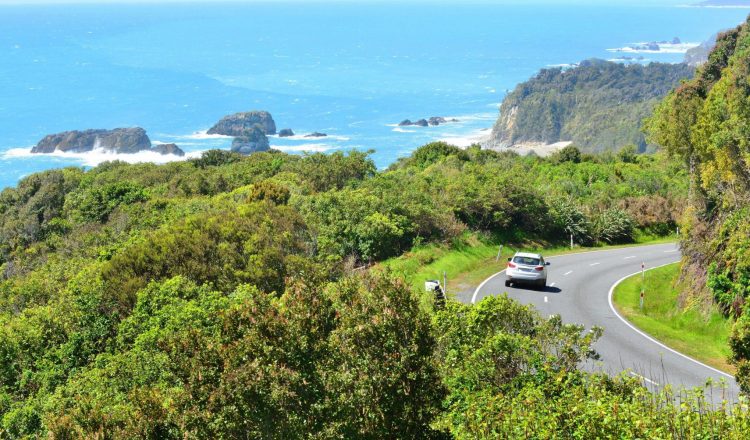道路の共有
サイクリストとの道路共有
自転車に乗っている人は、他の道路利用者に比べて保護されていないため、道路上でより弱い立場にあります。そのため、自転車の近くでは注意して運転する必要があります。
自転車に乗っている人と安全に道路を共有するためのトップヒント:
- 追い越しの際には特に注意し、速度を落としてください。自転車は思いがけなく動く必要があり、意思表示をする機会がない場合もあります。
- 曲がるときも止まるときも、はっきりと余裕を持って指示しましょう。
- 特にバン、トラック、バスを運転するときは、自分の死角を把握し、自転車がいないかもう一度確認しましょう。
- 交差点をもう一度よく見てみましょう。自転車は他の車両に比べて小さいので、目につきにくいかもしれません。
- 交差点で曲がる直前に自転車を追い越すのは避けましょう。
- 一般道で自転車を追い越すときには注意が必要です。スピードを落とし、理想的には自転車との間に少なくとも1.5メートルのスペースを確保しましょう。
- 道路脇で車のドアを開ける前に、バックミラーを確認し、肩越しに確認してください。
- 視界が悪くなったらスピードを落とし、注意してください。自転車は見えにくいことが多く、雨の日や光量の少ないときはなおさらです。
歩行者との道路共有
ニュージーランドの道路では、毎年平均して36人の歩行者が死亡し、1000人の歩行者が負傷しています。これらの死傷者の多くは、ドライバーが道路を利用する際にもっと注意を払えば防ぐことができます。運転中は常に歩行者に気を配ってください。
- 学校やバス停、横断歩道の近くでは、常に停止できるようにしましょう。
- 駐車している車の横を通るときは注意が必要です。歩行者は兆候なしに出てくることがあります。
- 子どもたちを乗降させるために停車しているスクールバスを追い越すとき、または向かってくるときは、道路のどちら側を走っていても時速20kmまで減速しなければなりません。
- お年寄りや体の不自由な方に気をつけましょう。
- 道端の露店や駐車場の出店者には特に注意が必要です。このような場所を訪れる歩行者は、道路を横断する際に交通状況を把握していない可能性があります。
横断歩道とは、道路上に白線が引かれている場所のことです。歩行者のほか、移動装置(電動車椅子など)や車輪付きの車輪付き乗り物(スケートボードや足で走るスクーターなど)を使用する人が利用します。
交差点の中には、中央に島があり、歩行者が立ち止まれる「避難所」が設けられているものもあります。これは、広い対面通行の道路や複数車線の道路を横断する歩行者にとって、一度に一方向の交通を横断できるので便利です。
横断歩道に向かって車を走らせると、横断歩道の手前には横断歩道標識が、横断歩道には白黒のポールが設置されています。ポールには蛍光オレンジ色の円盤や、夜間に点滅する丸い黄色のライトが取り付けられています。また、横断歩道の手前の道路には一般的に白いダイヤが描かれており、白い制限線が停止位置を示しています。
横断歩道に差し掛かったら:
- 横断歩道に足を踏み入れたり、横断歩道上を歩いたりしている歩行者がいたら、速度を落として止まれるようにしておきましょう(これには、明らかに横断歩道の利用を待っている人も含まれます)。
- 横断歩道の中央に高さのある島がない場合は、横断歩道のどの部分にいる歩行者にも一旦停止して道を譲ります。
- 交差点の中央に高台の島がある場合は、道路の半分で停止し、歩行者に道を譲ってください。
- 歩行者があなたの前を横切り、あなたの車から離れてから進んでください(道を譲る定義については145ページを参照)。
トラクターとの道路共有
ニュージーランドの道路では、トラクターなどの農業機械や建設機械を見かけることがあります。大型で、他の車両よりも走行速度が遅いため、近くを走行する際には特に注意が必要です。
- 前方にトラクターが見えたらすぐに減速し、警告ビーコンにも注意してください。
- トラクターの後ろを走っているときは我慢してください。衝突のリスクを冒すよりも、数分間低速走行をした方が良いでしょう。
- 追い越しには細心の注意を払い、安全かつ合法的な場合にのみ追い越してください。
- トラクターには幅広の荷物や長い荷物が積まれていることが多いので、追い越しが難しくなることを覚えておいてください。
- 停車中のトラクターの周りは特に注意してください。実際に旋回しようとしている場合もあります。
トラックやバスとの道路共有
トラックやバスの後に続く場合:
- 2秒ルールを覚えておきましょう。追従しすぎると視界が狭くなり、停止するまでの時間が短くなり、トラックやバスの運転手の死角に入ってしまう可能性があります。
- 雨天時には、追従距離を4秒に伸ばしてください。そうすることで、バスやトラックの車輪から水が吹き出して視界が悪くなるのを防ぐことができ、また、停車するまでの時間も長くなります。
- バスやトラックの運転手は、車の後ろや横に大きな死角があることが多いので、サイドミラーで確認できるよう、車両は十分に離れた後方に配置するのが良いでしょう。そうすれば、トラックやバスの運転手にあなたの存在を知らせることができます。
トラックやバスの追い越し
トラックやバスを追い越すには、自動車を追い越すよりも数秒長くかかるため、制限速度を超えずに安全に追い越すためには、前方の道路を十分に確保することが重要です。
対向車のトラックやバス:
対向車のトラックやバスを追い越すときは、空気の乱れの影響を受けないように、ハンドルをしっかりと操作してください。 トラックなどの大型車両は、カーブや交差点を走行する際に道路上でより多くのスペースを占有するため、必ずしも自分の車線を完全に守っているとは限らないことを覚えておきましょう。

















































